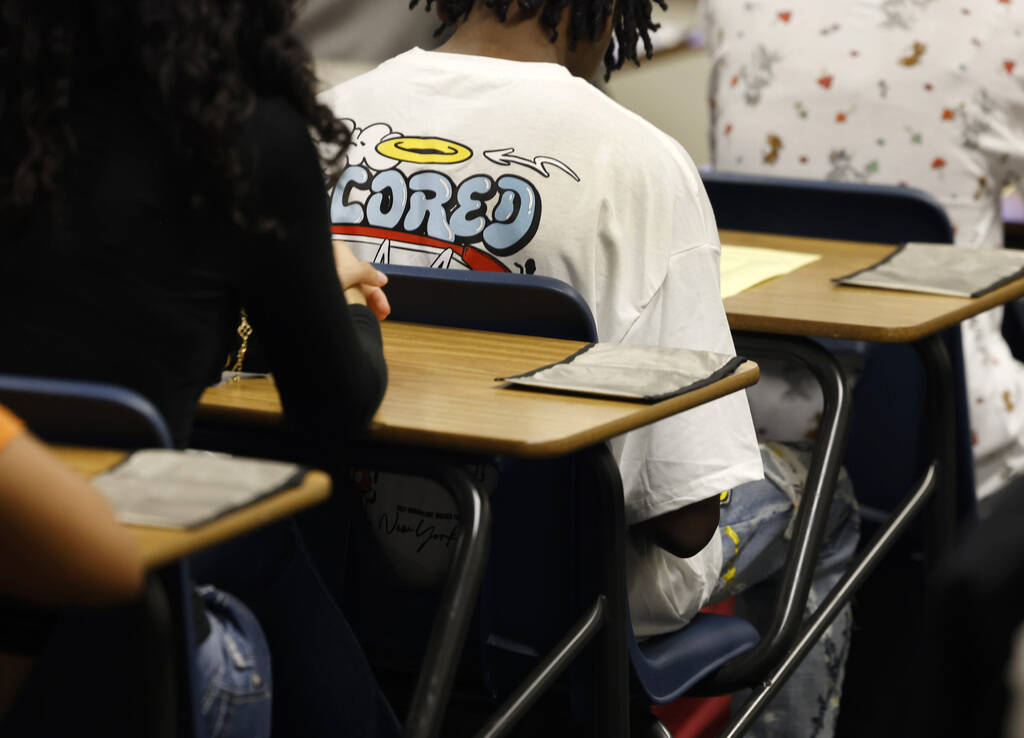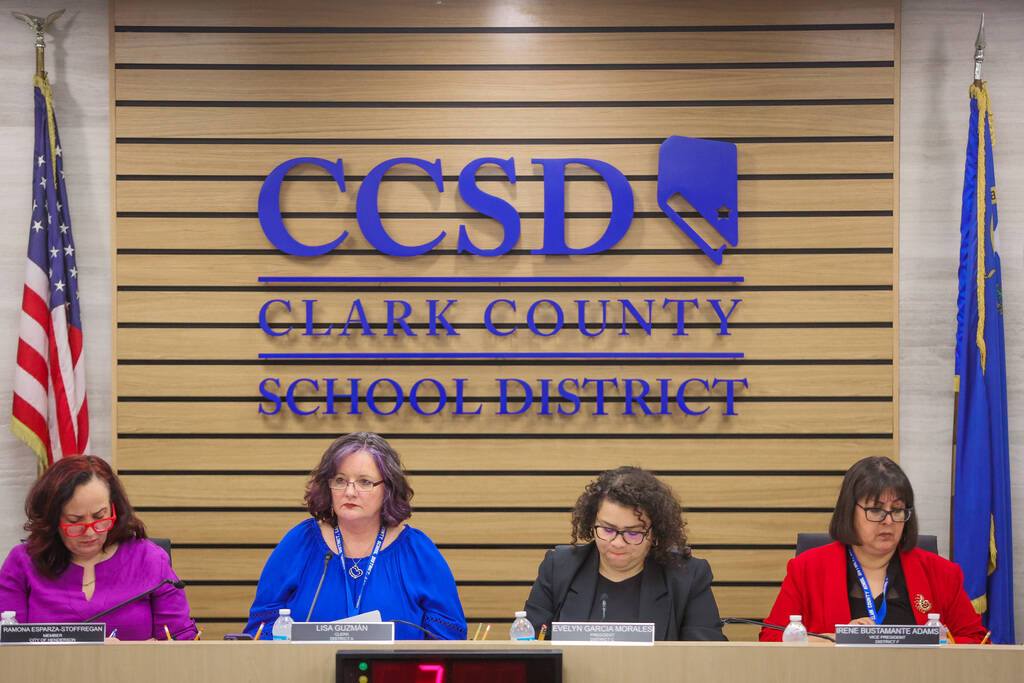State report card: Clark County students remain behind rest of Nevada
Less than one-third of Clark County School District students in third through eighth grades are proficient in math. Thirty-nine percent are proficient in English language arts. Less than a quarter of students in fifth through eighth grades are proficient in science.
Whereas the district had a math proficiency rate of 36.7 percent for elementary school, it dropped to 24.9 percent for middle school and 19.4 percent for high school. For English language arts, 42.2 percent of elementary school students were proficient, 37.8 percent of middle school students were proficient and 46.6 percent of high school students were proficient.
That’s according to the Nevada Department of Education’s performance results from the 2023-24 school year, which were released Monday.
The yearly report provides data on student performance, absenteeism, graduation and overall school quality. As a whole, the school district, which serves 63.5 percent of the 479,578 students in the statewide data, demonstrated lower student success than the rest of the state.
Overall proficiency rates in Nevada were slightly higher than in CCSD — 32.6 as compared with 30.1 percent of students in grades three through eight were proficient in math, 41.3 as compared with 39.3 percent were proficient in English language arts.
In the rest of the country, data from 2022 showed 36 percent of fourth grade students were proficient in math, 37 percent were proficient in reading and 35 percent of eighth graders were proficient in science.
Nevada boasted some gains since the 2022-2023 school year — a 1.3 percentage-point increase in math, and a 0.3 percentage-point increase in English language arts.
“These results are moving in the right direction, and the Nevada Department of Education is committed to using this data to monitor academic performance to inform initiatives to improve student outcomes across our state,” Jhone Ebert, the superintendent of public instruction for the state, said in a press release.
Broken down by ethnicity in Nevada, the largest gains in the last academic year in mathematics were among Asian students, who had a 2.2 percentage-point increase, and Black students, who had a 2.1 percentage-point increase. In English language arts, Black students showed a 1.3 percentage-point increase from the 2022-2023 school year, state data showed.
Proficiency rates were far lower for English language learners, with 11 percent proficient in math, and 11.3 in English language arts. Seven percent of English language learners were proficient in the English language.
Male students had a higher proficiency rate in math than their female counterparts — 32.9 percent compared with 27.1 percent but female students had a higher proficiency rate in English language arts — 42.3 percent compared with 36.5 percent.
When it came to college readiness, fewer than 1 in 5 11th graders in CCSD demonstrated proficiency in math on the ACT, designed to measure college readiness. A little less than half — 46.3 percent — were proficient in English language arts.
General quality
A top concern for years at CCSD has been overcrowded classes. The average class size for both the state and CCSD is a bit more than 20, with science classes having the largest at 23, according to the state’s data. The student to teacher ratio is 21-to-1.
The number of schools in the district that rated four stars out of a five-star rating system increased by 4.1 percentage points. Six schools in CCSD increased by two stars from last year, according to the state’s data.
Half of Nevada’s schools — 50.2 percent — are rated in the bottom two categories for the state’s five-star rating system, an increase of almost 2 percentage points from last year and 15 points in the past five years.
The number of schools in the top two categories, rated four and five stars, went down almost 7 percentage points in the last five years, to 21.9 percent of schools.
The graduation rate in Clark County dropped 4 percentage points in the last five years. Last year’s 81.5 percent is consistent with the rest of the state.
Absenteeism
CCSD’s chronic absentee rate was higher than the rest of the state, with almost 1 in 3 students missing 10 percent or more of school days as compared with the rest of the state, where 1 in 4 students were chronically absent. The average daily attendance for Clark County and the state is above 92 percent, according to the data.
The district had a slightly higher transient rate — the number of students who are not enrolled for the entire year — than the rest of the state, with 29 percent compared with 25.7 percent.
CCSD made safety a top priority this school year, with required ID badges and weapons detection systems. Last year, the county had 7,000 recorded incidents of violence in the 2023-2024 academic year, with 739 including weapons. This past August, the district confiscated 23 weapons.
Contact Katie Futterman at kfutterman@reviewjournal.com.
























